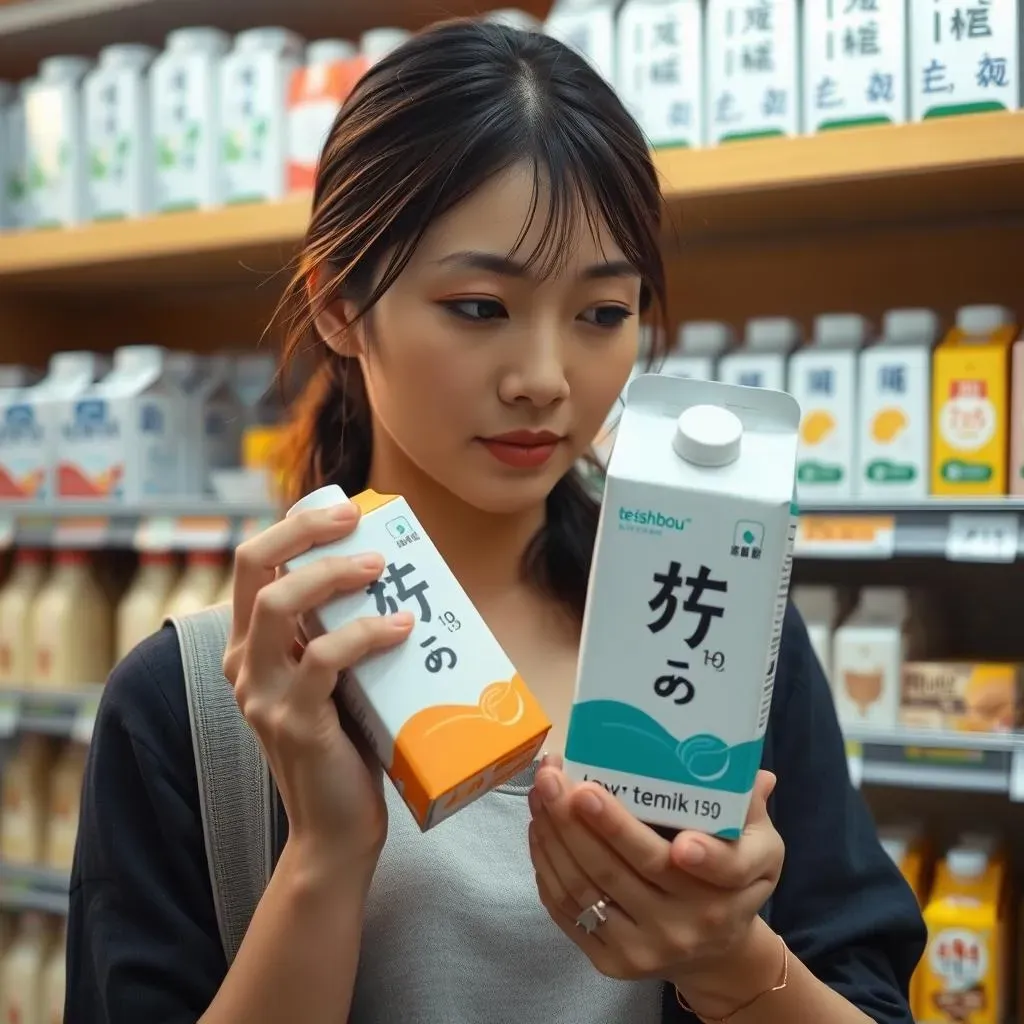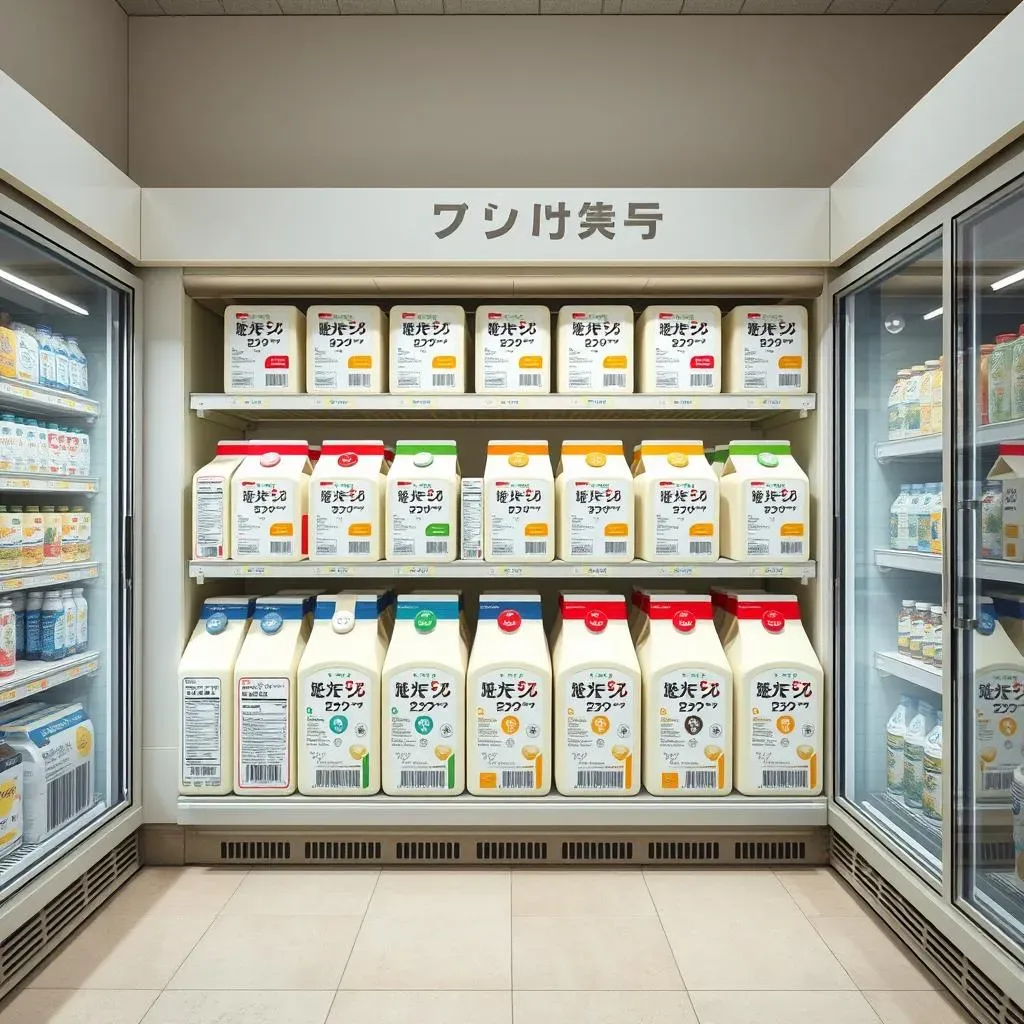Table of Contents
Ever stood in a Japanese supermarket, staring at rows of milk cartons, feeling utterly lost? You're not alone! Finding your preferred type of milk, especially low fat milk in Japan, can feel like deciphering a secret code. But don't worry, I've been there. This article is your guide to navigating the dairy aisle and understanding the world of low fat milk here. We'll break down the different types of milk, how to spot low fat options, and where you can find them. Forget the confusion and say hello to a clear understanding of low fat milk japan. We will explore the Japanese labeling system, and what to look for when choosing the right carton. We'll also check out popular brands and how availability might differ depending on your location. So, grab a glass (of milk, perhaps?) and let's dive in!
Understanding Low Fat Milk in Japan

Understanding Low Fat Milk in Japan
The Basics of Japanese Milk
Okay, so first things first, milk in Japan isn't just "milk." It's categorized, much like everything else, and that can be a bit confusing. You've got your standard whole milk, which is pretty common, but then you have adjusted milk, and then low fat milk (that's what we're here for!). It’s important to know that "low fat" isn't just one thing either; it has a specific fat percentage range, which we will get into. Think of it like this, it’s not just milk, it’s a whole family of milky goodness with slightly different characteristics.
The Japanese word for low fat milk is "teishibou gyuunyuu" (低脂肪牛乳). It's quite a mouthful, I know! But if you remember those characters, or even just "teishibou", it will help you find what you're looking for. It's usually between 0.5% to 1.5% milk fat. This is important because sometimes, what looks like low fat might actually be adjusted milk, which has a different fat content.
Why Low Fat Milk?
Why would someone choose low fat milk? Well, lots of reasons! Some people might be watching their calorie intake. Others might prefer the lighter taste. And let's be honest, sometimes, you just don't want the richness of whole milk. It’s all about personal preference. Interestingly, in Japan, there is a growing awareness of health and wellness, so low fat milk is becoming more and more popular. It's no longer just a niche product, it's a common option found in most stores.
It's worth noting too, that the taste of low fat milk in Japan might be slightly different from what you’re used to. Some people find it to have a cleaner, less creamy taste. I actually prefer it myself now, but it’s all a matter of taste. Just like how some people prefer a strong coffee, and others like it light.
Milk Type | Fat Content | Japanese Name |
|---|---|---|
Whole Milk | 3-4% | 牛乳 (Gyuunyuu) |
Low Fat Milk | 0.5-1.5% | 低脂肪牛乳 (Teishibou Gyuunyuu) |
Non Fat Milk | Less than 0.5% | 無脂肪牛乳 (Mushibou Gyuunyuu) |
Understanding the Labels
The packaging on Japanese milk cartons can be a bit of a puzzle. Most of them use kanji characters, which can feel overwhelming if you are not used to them. But don't worry, understanding a few key words will make your life much easier. Looking for the word "低脂肪" (teishibou), as we discussed before, is the first step. It means "low fat". You will usually find this word prominently displayed on the packaging.
Another thing to keep an eye out for is the fat percentage. This is usually written in numbers, like 1.0% or 1.5%. The fat percentage is a great way to ensure you're actually buying the low fat option. Remember, the closer to 0.5% the lower the fat content of the milk. Also, keep in mind that some brands might have slightly different packaging, but the words "低脂肪" and the fat percentage are usually consistent.
Identifying and Choosing Low Fat Milk

Identifying and Choosing Low Fat Milk
Decoding the Cartons: What to Look For
Okay, so you're standing in front of the milk section, ready to grab that low fat milk. But how do you make sure you're getting the right one? It's all about knowing what to look for on the packaging. Forget the fancy designs and focus on the important stuff. Firstly, and most importantly, hunt for the characters "低脂肪" (teishibou). This is your golden ticket to low fat milk. It's usually printed in a pretty noticeable spot on the carton, so it shouldn't be too hard to find. Think of it as your milk beacon!
Next up, check for that magic number – the fat percentage. This is usually shown as something like "1.0%" or "1.5%." Remember, low fat milk in Japan is typically between 0.5% and 1.5% fat. This number is crucial, as it's the concrete proof you're getting what you want. Don't just rely on the pictures or colors of the packaging; always double-check the words and numbers. And if you see a milk carton with “無脂肪" (mushibou), that's non-fat milk, meaning it has less than 0.5% fat.
Beyond the Basics: Other Indicators
Alright, so you've got the "teishibou" and the fat percentage down. Awesome! But there are a few extra things that might help you identify low fat milk. Some brands use specific colors or designs for their low fat options. For example, they might have a light blue or green label, or feature a slimmer design on the carton. These things are not always consistent, so don't rely on them completely, but they can be helpful clues. Think of them like Easter eggs, a little something extra to help you on your milk quest.
Another thing to note is that sometimes, the Japanese will write "low fat milk" in English, but don't always trust the English labels since sometimes they can be wrong. It’s rare to see it in English, but you know, just be aware. The main thing is to always double check for the kanji. Also, some cartons have an indentation on the top, which is sometimes an indicator of whole milk, so if you don't see that you're most likely looking at low fat or non fat milk. But this is not compulsory, so do not rely on this alone.
Label | Meaning | What to Look For |
|---|---|---|
低脂肪 (Teishibou) | Low Fat | Prominently displayed on the carton |
Fat Percentage | 0.5-1.5% | Numerical value near the label |
無脂肪 (Mushibou) | Non-Fat | Less than 0.5% |
Making the Choice: Finding the Right Fit
So, you've identified your low fat milk. Now comes the fun part, choosing the one that’s right for you. It's not just about the fat content, but also the taste and brand. Maybe you have a favorite brand that you always buy, or maybe you are adventurous and want to try different types. Some brands will have a slightly different taste, even if they are both low fat. It's all about finding what you enjoy the most.
And, consider where you are purchasing your milk. Some smaller convenience stores might only carry a limited selection, while bigger supermarkets will have a variety of brands and fat percentages. If you are unsure, do not be afraid to ask the staff, most of them will be happy to help you. Remember, finding the perfect low fat milk is a personal journey. Try different ones, explore the dairy aisle, and let your taste buds guide you.
Brands and Availability of Low Fat Milk Japan

Brands and Availability of Low Fat Milk Japan
Popular Brands to Look For
Alright, let's talk brands. Just like anywhere, Japan has its go-to milk companies, and you'll start seeing familiar names as you shop around. Meiji is a big one, and they usually have a pretty good selection of low fat options. Their cartons are easy to spot, and they usually clearly mark their low fat milk. Another popular brand is Morinaga, which you'll see in most big supermarkets. They also have a variety of low fat products, so you're likely to find something you like. These brands are like the reliable friends of the milk world.
Another brand that you might see is Snow Brand, or Megmilk, which is also a very common brand. They might have slightly different packaging or a slightly different flavor, so it's all about trying them out and seeing what you prefer. And don't be surprised if you see some brands you've never heard of, especially if you're in a smaller local shop. Japan has tons of regional dairies, so it's fun to explore them. It's like a little milk adventure every time you go shopping.
Brand | Common Low Fat Milk | Where to Find |
|---|---|---|
Meiji | Meiji Delicious Low Fat Milk | Most Supermarkets |
Morinaga | Morinaga Low Fat Milk | Major Supermarkets |
Megmilk (Snow Brand) | Megmilk Low Fat Milk | Wide Variety of Stores |
Where to Buy: Supermarkets and Beyond
Okay, so you know the brands, but where do you actually buy this stuff? Well, the most common place to find low fat milk is at your local supermarket. Big chains like Aeon, Ito-Yokado, and Seiyu usually have a dedicated dairy section, and you'll find a good selection of low fat milk there. The bigger the supermarket, the more choice you'll have, so it's worth checking out a few different places if you're feeling adventurous. It's like a treasure hunt, but with milk.
But what if you don't have a big supermarket nearby? No problem! Many smaller convenience stores, like 7-Eleven, FamilyMart, and Lawson, also carry low fat milk. The selection might be smaller, usually just one or two brands, but it's perfect for grabbing a quick carton on the go. And if you're in a really rural area, you might even find local dairies selling their milk directly. It's all about exploring your neighborhood and seeing what's available.
Regional Variations and Availability
Now, here's something interesting. Milk availability can actually vary a bit depending on where you are in Japan. Big cities like Tokyo and Osaka will usually have a wide selection of brands and types of milk, including low fat. But if you're in a more rural area, or even on a smaller island, the choices might be more limited. Also, if you are in an area that has a lot of dairy farms, you are more likely to find regional brands, that might not be available in other parts of the country. It's like how different regions have their own special snacks.
Another thing to keep in mind is that some supermarkets might only carry milk from certain regions. For example, after the Fukushima incident, many supermarkets started to favor milk from western regions, so the availability of eastern brands might have been reduced. It's all part of the dynamic world of Japanese dairy. But the good news is that low fat milk is becoming more and more common everywhere, so you're likely to find it no matter where you are. So, keep your eyes peeled and enjoy the milky adventure.
